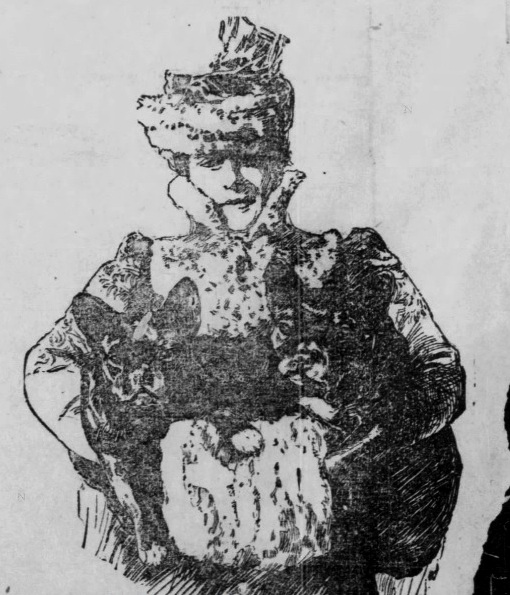
Aimee Crocker with two of her many prized pampered French bulldogs.
This is a story about a princess and her three French bulldogs, the first cricket club in New York City, an old farm, and a grand hotel called Gilsey House.
In Part I of this Old New York dog tale, we met the princess, Aimée Isabella Crocker Ashe Gillig Gouraud Miskinoff Galitzine. In Part II, we’ll explore the old Casper Samler Farm and re-visit the three bulldogs in their home at the Gilsey House.
Part II: Living the Life of Luxury at the Gilsey House
In 1889, when Ms. Aimee Crocker was on the second of five marriages, she and her husband Henry Mansfield Gillig spent winter months in their suite of rooms at the Gilsey House, a luxury hotel at 1200 Broadway. It was here that their three bulldogs — Dicbutau, Shugi, and Boola Boy — lived in Gilded Age style.
Not only did they have their own room, but these pooches had their own attendants. Their personal footman walked them down Fifth Avenue and gave them a massage three times a day. And they had a maid who bathed them daily in their own private bath (the perfume for these baths cost $1 a day).
Each dog wore a massive collar made of Japanese coins worth a fortune. And their blankets and boots, changed every few months, cost hundreds of dollars.

Mrs. Izora Schwartz Chandler, a famous painter of dogs, was hired to paint the three bulldogs’ miniatures at $100 each.
But wait, there’s more. These spoiled little doggies dined on the same food as their mistress. They slept in imported baskets on elder-down pillows. And they had skilled medical care from one of the most fashionable physicians in New York.
The bulldogs also had the honor of living in the Gilsey House, which was one of the most luxurious hotels in New York City at that time.
The Old Casper Samler Farm
The Gilsey House was erected from 1869 to 1871 on the former homestead of Casper Samler (aka Semler).
Samler was a Dutch farmer who had a large dairy farm along the Bloomingdale Road (Broadway). His 41 acres comprised the 1655 patent of Anthony Mathys (a free African American), part of the land of Claes Martensen van Rosenvelt, and part of the Common Lands of the City of New York (later the Parade Ground and Madison Square Park). The triangular-shaped farm was bounded by the Bloomingdale Road and the old Eastern Post Road (the road to Kingsbridge), from about present-day 23rd Street to 42nd Street.
From the book “Early New York Houses” published in 1900:
On March 27, 1780, [Samler] purchased from Dr. Samuel Nicoll and others, “a farm or plantation, and messuage or dwelling house, lying and being at the third mile stone, bounded west by the Bloomingdale road, south and east partly by the road to Kingsbridge and partly by the Commons of the city.
Casper Samler built his first farmhouse near present-day East 28th Street and Park Avenue. He constructed a new dwelling, stables, and outbuildings in the early 1800s on the northeast corner of West 29th Street and Broadway.
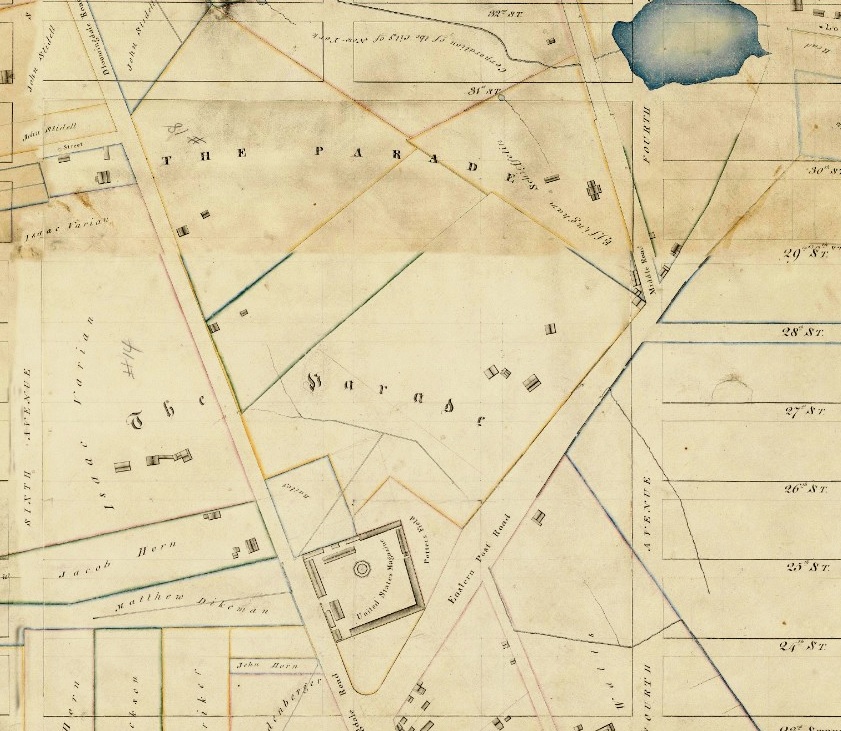
Once called the Commons Lands of New York City, Casper Samler’s farm comprised the Parade Ground and arsenal, which was used for military maneuvers and drills prior to the War of 1812. The Parade Ground was renamed Madison Square in 1814, and in 1847 Madison Square Park was created. Click here to explore this 1811 Randel Composite Map.
Casper Samler died in 1810, leaving the farm and other property to his grandchildren and a step-daughter, Margaret. The farm was divided into lots, and Lot # 2, which included the homestead on the Bloomingdale Road, was conveyed to Elizabeth Galilee. Elizabeth married James W. Anderson in 1815; her son, also James Anderson, lived in the farmhouse until 1869, when Peter Gilsey leased the land for his new hotel.

In this 1807 map, three dwellings are shown on the Samler farm (spelled Semler on this map), including the original homestead near present-day 28th and Park Avenue (Fourth Avenue), the second homestead at the Bloomingdale Road (Broadway) and 29th Street, and what was probably stables or other outbuildings on Broadway near 30th Street. You can explore this map at the Library of Congress by clicking here.
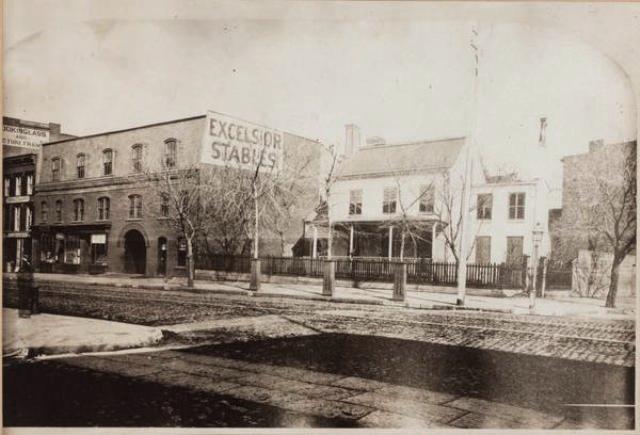
The old Casper Samler homestead at 1200 Broadway was still standing in 1865. The house was torn down in 1869 to make way for the Gilsey House. NYPL Digital Collections
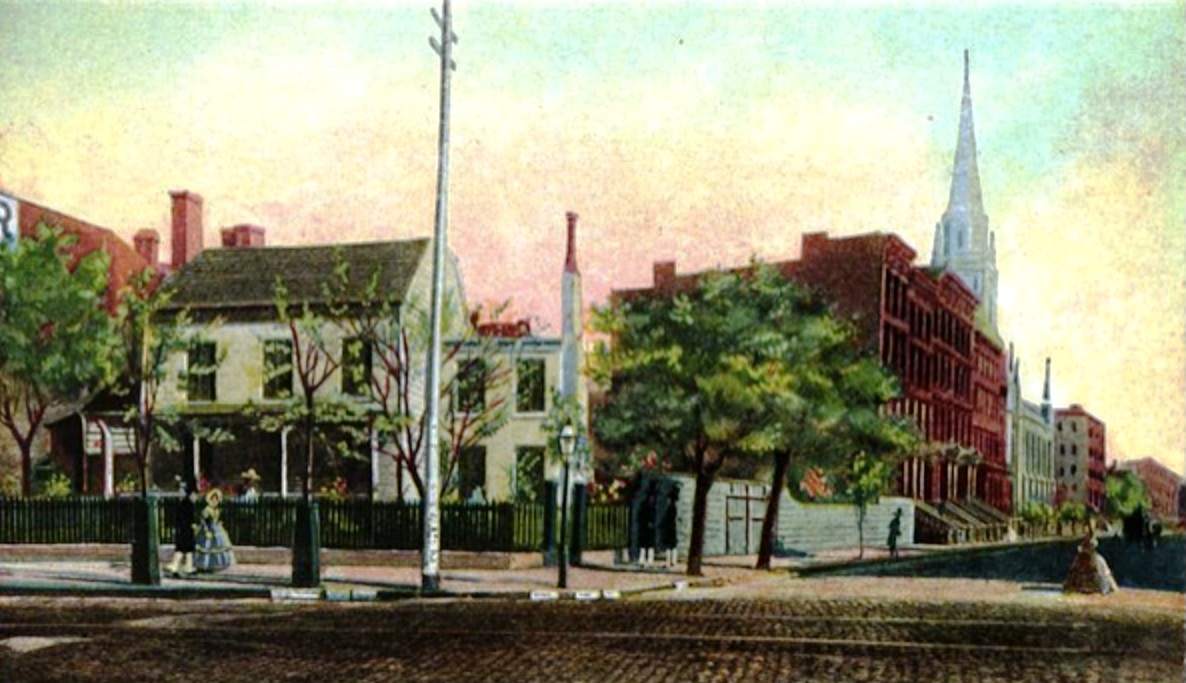
In this colored illustration of Casper Samler’s homestead, the Marble Collegiate Church, constructed in 1854, is in the background on West 29th Street. According to the church’s website, when the church was constructed, congregants were surprised to learn that their new church was near a dairy farm on a dirt road (Fifth Avenue). An iron fence, like the one around the Samler house, surrounded the church to keep out the farm livestock.
The St. George Cricket Club Grounds
Many websites note that when Peter Gilsey leased the land from the estate of Casper Samler for his Gilsey House hotel, a portion of this land included the former grounds of the St. George Cricket Club. But that’s all they say. I did some digging and got the full scoop on what was New York City’s first cricket club.
The St. George Cricket Club of New York City, aka, the Dragonslayers, formed in 1838. Most of its playing members were British-born; the club excluded Americans from participating in their “English game.”
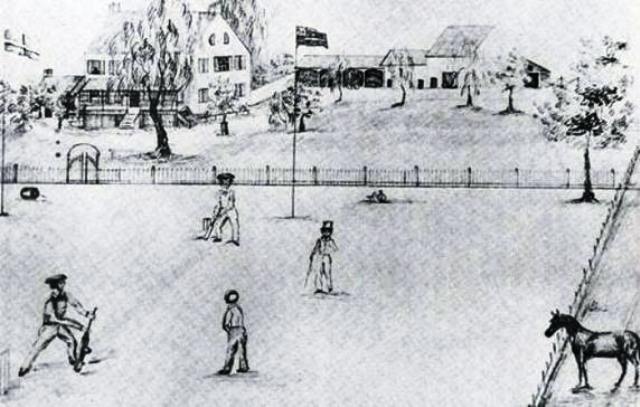
Here’s an illustration of a cricket game on the grounds of the St. George Cricket Club behind present-day 1236 Broadway sometime around 1838. The buildings in the background may either be the Casper Samler homestead and stables, or perhaps Ralph Burrough’s ale house, depending on where the artist was standing.
Some sources say the men played on grounds near some vegetable farms on 42nd Street.But I found an obscure article published in the “Spirit of the Times” on March 18, 1882, which states that the club played on vacant ground behind an ale house at what is today 1236 Broadway, between 30th and 31st Street. This would have been just up the street from the Casper Samler homestead at 1200 Broadway.
From the “Spirit of the Times”:
For the purposes of a cricket ground the Dragonslayers scoured occupation of a plot of land, severed from a kitchen garden, to the rear of a diminutive wayside tavern on Broadway, then the Bloomingdale Road, a short distance above the House of Refuge (Fifth Ave and 23rd), which penal reformatory at that period must have covered a section of suburban property nowadays confronted by Madison Square, as the cricket ground itself extended over a region traversed in subsequent years by Fifth Avenue, not a long way off from its junction with Broadway.
The wayside inn or ale cottage, for it was a mere two-story shingle tenement, guarding entrance to the cricket-field was, however, a well-known place of resort, despite its dwarfish and insignificant appearance, with pedestrians, as its proprietor, Ralph Burroughs, an uncouth Englishman, was notorious among his epicurean countrymen as the cultivator of the most luscious and delicious kitchen stuff to be purchased upon Manhattan Island.
The St. George’s ground was of narrow dimensions and topographically unsuited for a prodigious display of batting, as a hard hit to the long field too often carried the ball either amid the main body of admiring spectators, thereby causing dire confusion, or else sent it flying over the fenced-in boundaries, necessitating a gymnastic performance upon the part of fielders, more vigorous than graceful.
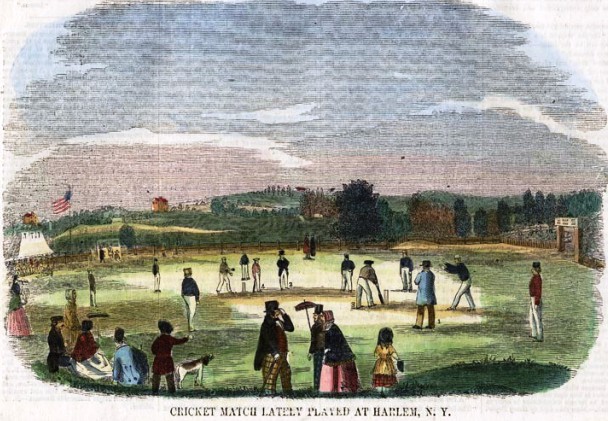
The Red House Grounds were located at the corner of Third Avenue and 105th Street. The grounds, which also included a trotting course, extended to the Harlem River.
Ralph Burroughs was reportedly a rough, course Englishman. His wife was described as a “rotund, rosy checked, blooming matron.” They had a daughter who often flirted with the cricket players.
Ralph’s vegetable dishes made with celery, asparagus, and other vegetables grown in his garden were very popular. It was through this garden that one had to traverse down a narrow path to reach the cricket grounds.
Eventually, when development along Fifth Avenue began to encroach on their playing field, the St. George Cricket Club moved to the Red House cricket grounds in Harlem. In 1854, the members accepted the invitation of the New York Cricket Club to share their space at the Elysian Fields in Hoboken, New Jersey.
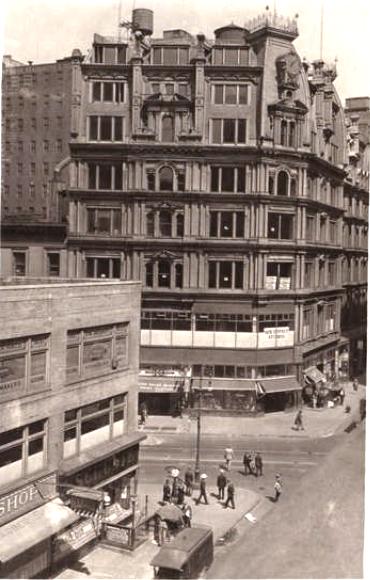

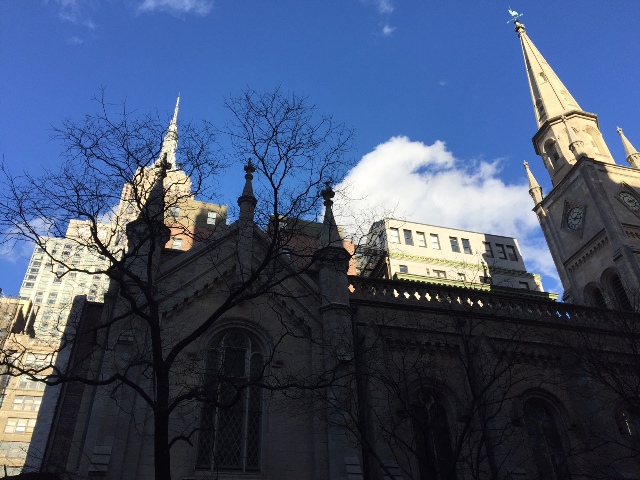
The Empire State Building now looms behind the 1854 Marble Collegiate Church.





Caspar Samler was my 5th Great-Grandfather. He was naturalized along with a group including Baron von Steuben, but we have never been able to determine when he emigrated, or from where. Samler family researchers believe that it was from Germany rather than the Netherlands, but nothing definitive has been found. The name Samler/Semler is relatively common, being essentially the German equivalent of “Baker.” [of white rolls, rather than coarse bread] He was quite successful, and beyond being a farmer also invested in property elsewhere in the City.
Caspar died in 1810, but because the City’s lease of some of his land was for 99 years, lawyers had to search for descendants in the early part of the 20th Century.
Thank you for writing — I always love when someone discovers one of their ancestors in my stories! I work in midtown Manhattan, just two blocks from what was once Caspar Samler’s farm, so I often think of him when I’m walking past Gilsey House or walking to Madison Square. And thank you for this additional information — I did know that he owned quite a bit of land elsewhere, but I did not know about his naturalization with Baron von Steuben.